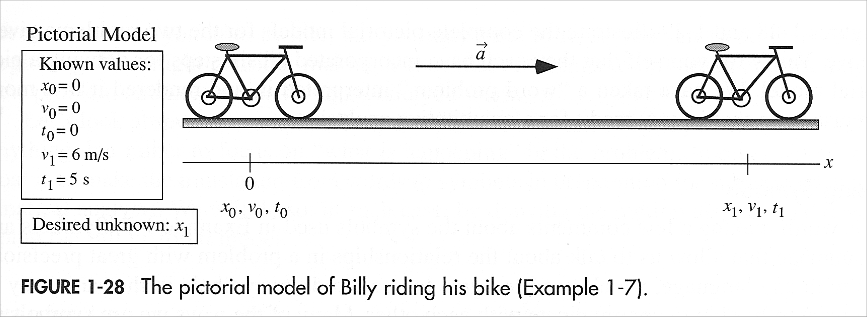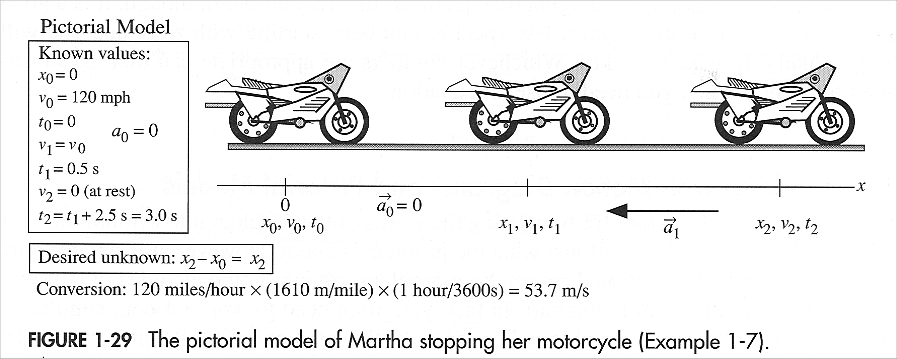Pictorial Models
When first solving a problem, our initial concern should not be with specific numbers and calculations, but with simply understanding the information in a useful way.
The Pictorial Model is a good way to do this.
A Pictorial Model should include:
- A sketch of the situation, showing each object
- at the beginning of the motion,
- the end of the motion,
- and at any point in between where the character of the motion changes.
- A coordinate system that you impose on the problem, including a choice of the origin, the axes, and the positive direction.
- Symbols, on the sketch, to show position, velocity, and time with subscripts for each time an object is shown on your sketch. Also, show symbols for other relevant quantities such as mass.
- An arrow indicating the direction of the acceleration vector or vectors. Write a = 0 if the acceleration is zero.
- A table listing the values for all quantities given in the problem, or that can be found quickly using geometry.
- A list of the unknown quantities you have been asked to find.
Example 1-7:
(1) Draw a pictorial model for the following problem: Billy jumps on his bike pedals away with a constant acceleration. How far has he traveled after 5 seconds, when his speed is 6 m/s?
(2) Draw a pictorial model for the following problem: Martha is riding her motorbike on a closed airstrip course at 120 mph when she passes a cone by the side of the airstrip. After 0.5 s, she applies the brakes, and brings her motorbike to a stop in 2.5 s, with a constant deceleration. How far from the cone does she come to a stop?
 |
 |